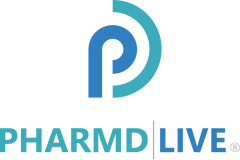
Meeting the Moment in Primary Care
The shift to value-based care in the U.S. is no longer optional; it’s essential. Primary care clinics face growing pressure to deliver holistic, high-quality care for aging Medicare beneficiaries with multiple chronic conditions. The ongoing “Silver Tsunami” continues to expand the Medicare population, exposing the limitations of Traditional fee-for-service (FFS) models. These outdated systems fail to support sustainable, patient-centered care or align with today’s clinical and financial demands.
To accelerate innovation, the Centers for Medicare & Medicaid Services (CMS) introduced Advanced Primary Care Management (APCM) in 2025. This transformative, value-based care model empowers U.S. clinics to reduce care fragmentation, improve health outcomes, and maximize Medicare reimbursement. More than a payment reform, APCM offers a strategic framework for delivering smarter, scalable, and proactive care across the primary care landscape.
What is APCM?
A Value-Based Framework for Modern Primary Care
APCM is a value-based care model designed to support primary care practices in delivering comprehensive, coordinated, and patient-centered care. It amalgamates services such as Chronic Care Management (CCM) and Transitional Care Management (TCM) into a cohesive approach. This integration allows clinics to provide a broad spectrum of primary services tailored to individual patient needs based on their complexity. Notably, APCM services can be billed using a monthly bundle, simplifying the billing process compared to traditional time-based billing for each care management service.
Unlike traditional fee-for-service (FFS) models that incentivize volume, APCM promotes proactive, longitudinal care rooted in coordination, communication, and continuity. Clinics can now move beyond episodic visits to engage patients in ongoing health management tailored to their unique risk profiles.
Key Benefit:
- Simplifies billing and reduces administrative burden
- Supports comprehensive care through monthly bundled codes
- Encourages proactive health management based on patient complexity
Who Can Bill for APCM?
Beginning January 1, 2025, the following providers can bill for APCM:
- Physicians (MD/DO)
- Nurse Practitioners (NPs)
- Physician Assistants (PAs)
- Clinical Nurse Specialists (CNS)
Billing Requirements Include:
- Must be the patient’s exclusive primary care provider
- Obtain informed consent (verbal or written)
- Serve as the central hub for care coordination
Primary care specialties such as family medicine, internal medicine, geriatrics, and pediatrics are most aligned with APCM billing eligibility.
APCM Coding and Reimbursement: By Complexity
APCM Coding and Reimbursement: By Complexity
The resources required to deliver effective advanced primary care services vary significantly based on patient complexity. To ensure accurate billing and appropriate reimbursement, clinicians must select the correct HCPCS code for Advanced Primary Care Management (APCM), based on each patient’s medical and social risk profile. These codes—G0556, G0557, and G0558—are billable once per patient per month, provided all documentation and service requirements are met.
It is crucial to note that APCM billing codes operate independently of traditional capitation structures used in Accountable Care Organizations (ACOs). This distinction provides a financial advantage for both clinics participating in ACO models and those that do not. By utilizing these unique codes, clinics gain access to a vital revenue stream through tailored reimbursement models, enabling them to enhance care delivery and financial sustainability.
APCM Codes and Monthly Reimbursement Overview (2025 Estimates):
| Code | Patient Profile | 2025 Estimated Reimbursement |
| G0556 | Low-risk patients with ≤1 chronic condition | ~$15/month |
| G0557 | Moderate complexity (≥2 chronic conditions) | ~$50/month |
| G0558 | For high-risk Qualified Medicare Beneficiaries (QMB) with two or more chronic conditions (same criteria as G0557), including all requirements of G0556. | ~$110/month |
Note: APCM codes are not part of Accountable Care Organization (ACO) capitation models, providing financial flexibility for ACO and non-ACO clinics.
For the latest reimbursement rates and policy updates, refer to the CY 2025 Medicare Physician Fee Schedule Final Rule.
The 13 Core Elements of APCM Compliance
To fully implement APCM, clinics must integrate the following core elements:
- Patient Consent: Inform patients about the service, obtain written or verbal consent, and document it in the medical record.
- Initiating Visit: Conduct a separately billable initial visit for new patients unless seen within three years or who have received CCM, APCM, or TCM within the past year. AWV may qualify as an initial visit if the provider who will be responsible for providing APCM care performs the AWV.
- Continuity of Care: Ensure continuity with a designated care team member for successive routine appointments.
- Alternative Care Delivery or Access: Offer care delivery options beyond office visits, such as home visits and extended hours.
- Comprehensive Care Management: Perform medical and psychosocial assessments, ensure preventive services, medication reconciliations and management, and provide clinical oversight of self-management.
- Comprehensive Care Plan: Develop, implement, revise, and maintain an electronic patient-centered comprehensive care plan accessible to the care team and patient/caregiver.
- 24/7 Access to Care: Providing patients with 24/7 access to the care team for urgent needs.
- Care Transition Management: Ensure seamless transitions between healthcare settings. Coordinate timely follow-up after ED visits, hospital, SNF discharges, and referrals. Exchange health information electronically and follow up within 7 days.
- Care Coordination Across Settings: Coordinate with various service providers and document communications about the patient’s needs, goals, and preferences among all care providers, including home and community-based services.
- Enhanced Communication Methods: Enable secure digital tools (email, messaging, portals) and enable asynchronous and interprofessional communication.
- Population Health Data Analytics & Management: Identify care gaps, risk-stratify patient population, and offer additional targeted interventions as needed using data analysis.
- Performance Measurement & Reporting: Assessing quality of care, total cost of care.
- Use of Certified EHR Technology: Maintain and utilize CEHRT to support care coordination, documentation, and reporting.
Clinical Insight: Successful implementation often requires multidisciplinary collaboration, workflow redesign, and technology integration across platforms.
Making APCM Work: Practical Clinic Strategies
1. Optimize Your EHR
Choose an EHR platform tailored to care management workflows, automated alerts, and billing flagging for eligible patients look for features like risk stratification, smart documentation prompts, and bundled code billing alerts.
2. Invest in Staff Training
Empower teams with comprehensive training on Advanced Primary Care Management (APCM) compliance, clinical documentation excellence, and patient engagement strategies aligned with CMS guidelines. Equip clinical and billing staff with the knowledge and tools to ensure accurate documentation, appropriate code selection, and seamless patient engagement workflows that meet regulatory standards and drive better outcomes.
3. Enhance Patient Communication
Ensure 24/7 coverage via nurse triage or on-call services and enable secure digital access through patient portals and messaging.
4. Weekly QA/QC Audits
Establish review protocols to track documentation accuracy, code compliance, and care plan updates.
5. Leverage Data and AI-Driven Insights
Leverage analytics to track performance trends, patient engagement, and clinical outcomes, and identify areas for care improvement.
Why APCM Matters: Clinical and Financial Benefits
🔹 For Clinics:
- Diversified revenue beyond episodic visits
- Improved operational efficiency and sustainability
- Enhanced patient satisfaction and retention
🔹 For Patients:
- More personalized, continuous care
- Early interventions that reduce hospital visits
- Easy access to providers outside traditional visits
🔹 For Payers:
- Lower cost of care through proactive management
- Fewer emergency room visits and hospital readmissions
- Better population health outcomes
A New Era in Primary Care Management
As chronic conditions surge, primary care clinics face mounting pressure to deliver continuous, coordinated care. Advanced Primary Care Management (APCM) meets this challenge, bridging gaps between visits and extending support beyond clinic walls. It enables proactive, patient-centered care while easing operational strain and improving engagement.
Unlike traditional capitation models, APCM uses distinct HCPCS codes, offering a flexible revenue stream for both ACO-affiliated and independent practices. This structure supports sustainability, especially for clinics navigating staffing and resource constraints, without sacrificing care quality.
In today’s outcome-driven environment, APCM is both a clinical and financial lifeline. It empowers care teams to reduce complications, deliver high-touch support, and meet the growing needs of patients with complex conditions.
More than a billing reform, APCM is a strategic necessity. It helps clinics align with CMS goals, enhance patient trust, and future-proof their operations in a value-based care world.
Final Word: APCM Isn’t Optional, It’s Strategic
APCM is a scalable, evidence-based model that strengthens care delivery and financial resilience. With CMS-aligned priorities and flexible reimbursement, it’s not just another program, it is the path forward for primary care leaders.








